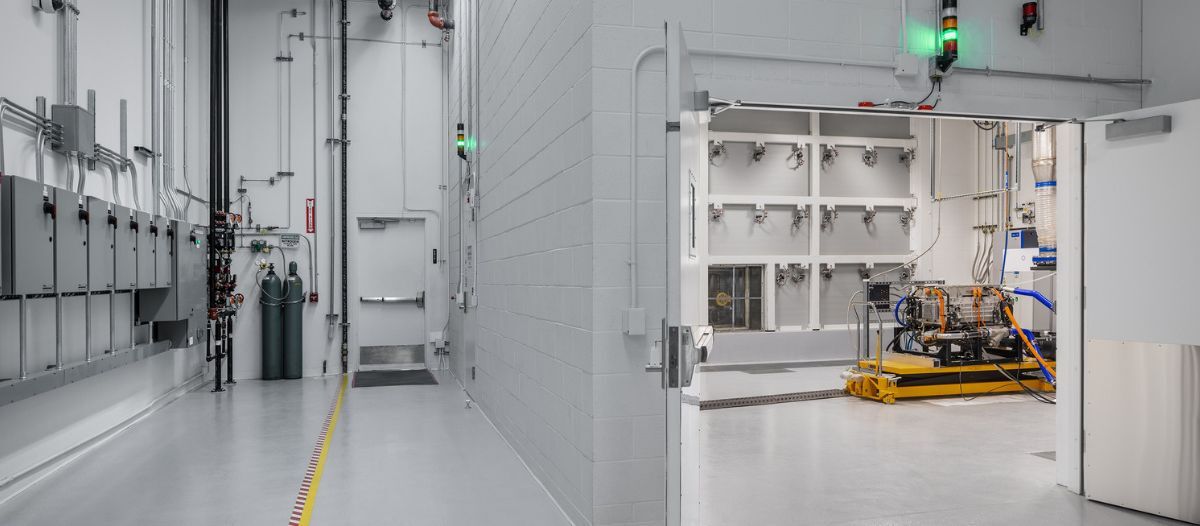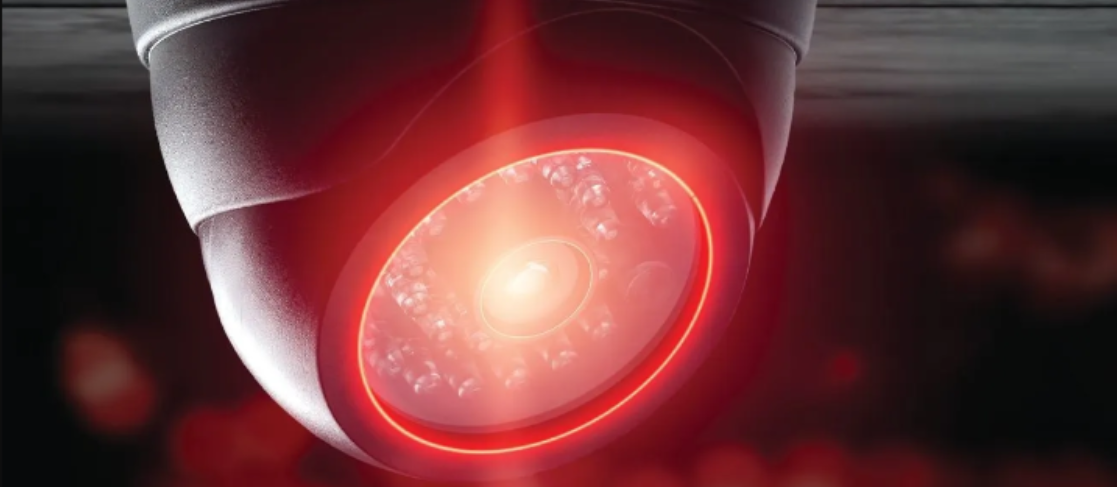Future-proofed
Building flexibility into engine propulsion test labs

In the latter part of the 20th century, automakers constructed test labs focusing on then-current technology, which was the internal combustion engine, with the expectation that their investments would last for decades. Today, that confidence no longer holds. The future of propulsion is uncertain — battery-electric, fuel cells, alternative fuels and hybrid solutions are all prevalent in the buyer’s market, with no clear winner. Unpredictable regulatory shifts and changing consumer demands increase volatility, making facility planning dedicated to one powertrain option risky.
Deloitte’s 2025 Global Automotive Consumer Study tracked consumer trends in the automotive industry. “The global automotive industry is undergoing a tremendous amount of change at an unprecedented pace,” according to the report, the findings of which included an uptick of interest in internal combustion engines (ICE) and hybrid vehicles.
These and other developments affect the way automotive manufacturers perform testing and build testing facilities. To stay ahead of market trends, it is imperative for manufacturers to rethink how they specify and invest in their propulsion testing portfolio — focusing on flexibility and future-proofing rather than committing to a single solution.
An aways-evolving market
The automotive testing equipment market is estimated at US$4.1 billion in 2024 and is projected to reach roughly $6.4 billion by 2034, growing at a compound annual growth rate (CAGR) of nearly 5 percent over those 10 years. As automotive testing requirements grow and evolve, the market continues to innovate rapidly. Auto manufacturers are introducing new products to market faster. As product development times have shortened, testing times have become more aggressive. The time spent in test cells has decreased, driving the need for more flexible testing and more efficient test cells. This added flexibility enables manufacturers to move products into the test lab faster, reducing downtime. Modern test cells can also accommodate higher channel counts, additional types of measurements, and a wider variety of combustion and electric propulsion technologies.
Automotive manufacturers’ ability to grow and evolve in an always-changing consumer market depends on staying agile and quickly adapting testing to align with the company’s product portfolio. Consumer preferences tremendously influence future product releases, which in turn have a trickle-down effect on the testing environment. The more agile that manufacturers are in their testing, the faster they can adapt to changes in industry direction.
The automotive industry is facing several changes and challenges that impact testing requirements, such as electrification and cybersecurity testing. Electric vehicle (EV) testing, for instance, is critical. It is vital to test EV batteries for performance, including simulations in harsh conditions such as overcharging and overheating, and their ability to withstand repeated charging and discharging. Additionally, various EV battery tests are needed to assess the charging stations and guarantee that EVs and charging stations can communicate.
Overall, the test procedures are essentially the same. What is evolving are the required results. The procedures are conducted on a vehicle chassis dynamometer, and the results show the fuel economy/range and emissions. Targets for emissions decrease, and the miles per gallon (MPG)/range increase. A chassis dynamometer test facility needs the flexibility to test the manufacturer’s complete portfolio of vehicles. Electric-powered vehicles take longer to complete a comparable EPA test than an ICE vehicle. For these reasons, it is crucial to assess the number of available test stands compared to the composition of the fleet.
 All new products must be tested, and consumer sentiments and regulations will continue to directly influence the products that manufacturers introduce to the market. As product introductions adapt to changing consumer and regulatory demands, the ability of the testing community to remain agile is critical. Testing is one key step in the development process, and the timeline can be optimized if the product technology is easily adapted within the constraints of the test environment.
All new products must be tested, and consumer sentiments and regulations will continue to directly influence the products that manufacturers introduce to the market. As product introductions adapt to changing consumer and regulatory demands, the ability of the testing community to remain agile is critical. Testing is one key step in the development process, and the timeline can be optimized if the product technology is easily adapted within the constraints of the test environment.
Designing for flexibility
It is important to note the risks of overcommitting test infrastructure to one propulsion solution in the automotive industry. Doing so can force an organization to sacrifice agility. Concentrating exclusively on a single propulsion technology requires significant time to add further capabilities, which extends the testing timeline and, ultimately, the product development timeline and the time-to-market.
With those concerns in mind, automotive companies must consider several factors when investing in new testing infrastructure. These include facilities, equipment and processes the organization relies on for functional, safety and performance testing. Take future growth, for instance. How can new testing be implemented to allow the test cell to quickly adapt to a new propulsion technology? Future-proofing test cells helps create a more agile environment.
In March 2023, Automotive Testing Technology International’s Alex Grant highlighted some of the keys to future-proofing a facility, with flexibility topping the list. “In a dynamic environment,” Grant wrote, “avoid fixed layouts and equipment that limits testing to a single technology type whenever possible.” Regarding infrastructure, Grant advised planning for enough headroom to ensure stable, high-speed connectivity and adequate power supply for electrified vehicles. Grant also stressed the importance of designing for convenience, observing developers benefit from “easy access and a smooth transition throughout their testing journeys, whether physical or virtual.”
Designing a future-proofed facility involves an inside-out approach that asks, “What is the facility going to be required to do?” It is also essential to design a testing environment with maximum flexibility and consideration for future technological advancements. Designing for growth potential, in the form of extra fuel lines or excess power capabilities, will aid in future adaptations of the test cell. Ensure safety now and in the future by incorporating additional inputs. Consider the classification of the test cells and account for current fuels as well as potential new fuels. When creating a safety matrix, allow for future technologies, even if they are not in the current plan.
It is crucial for an agile automotive testing facility to have an infrastructure adaptable to the changing regulatory requirements, technological advances and different propulsion scenarios. Standardized equipment is adaptable enough to meet multiple testing needs, while flexible, future-proofed testing spaces should be able to do the same.
From an electrical standpoint, battery simulators and future electric vehicle technology require significant power. It is easier to design a test cell now to account for current and potential electrical requirements in the future. This applies to equipment as well. Design a space for equipment that might be required in the future to accommodate alternative propulsion technologies.
The overarching goal is to minimize the time required for a technology change. A flexible, modular approach accounts for this. Designing in space, accounting for extra utilities and safety, allows the quick addition of new technology or equipment with a minimum reworking of the space. Minimizing the need for rework also reduces the time needed to create a new test facility.
A team effort
When determining who is responsible for future-proofing automotive test facilities, the short answer is everyone. For example, it is vital for the product development team to be prepared for current and future needs. Investing in a testing facility is a commitment of 20 years or more, and the facility should be flexible enough to meet the requirements associated with product development changes throughout its lifespan.
Testing engineers will work with the product development and design/building teams to create a future-proof facility. Designers and builders must envision a facility that accounts for growth potential with maximum flexibility and, ideally, minimum schedule and cost additions. The finance team plays an integral role as well. Remember the adage, “spend a dollar today to save 10 dollars tomorrow.” Designing and building an automotive facility with all the necessary future-proof features may require extra funding today. Spending that money today means saving more money — and time — in the future. Ultimately, customer sentiment and regulations will drive the automotive market, and it is imperative for the automotive testing environment to be flexible enough to accommodate these factors as they inevitably change over time.

Read more on Operations & Maintenance or related topics Performance Measures and Operations and Maintenance Planning
Explore All FMJ Topics









